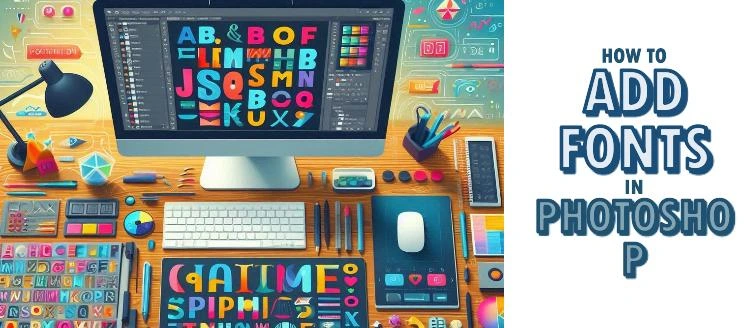Theodore Lowe, Ap #867-859
Sit Rd, Azusa New York
Find us here
A Comprehensive Guide to Standard Photo Size

Selecting the right size for your photos can make a significant difference in how they are displayed. Whether you're printing photos for frames, albums, or online platforms, understanding standard photo sizes is the key. In this guide, we will explore the most common photo sizes, their dimensions, and where they are commonly used.
By the end, you'll have a clear understanding of the standard sizes to help you choose the perfect dimensions for your photos. Let's dive into the world of standard photo sizes and discover how to make your images stand out!
What Are Standard Photo Sizes?
Common Aspect Ratios
Aspect ratio is the proportional relationship between the width and height of an image. The common aspect ratios for photos are 3:2, 4:3, and 16:9. Each ratio determines the shape and size of the photo, impacting its visual composition and framing.
Different Standard Photo Sizes
The standard photo sizes depend on their purpose. The most common standard photo sizes include3×2,4×4,4×6,5×7,8×8,11×14,12×12,8×10,5×15,12×36,8×24,16×20,20×30. Understanding these dimensions is crucial for various applications such as printing, framing, and digital displays.
Importance of Standard Photo Sizes
Adhering to standard photo sizes ensures consistency and compatibility. It's essential for aesthetic appeal and professional presentation in photo albums, frames, websites, and social media platforms. Standard sizes also simplify the process of printing and displaying images.
Understanding Aspect Ratios
Aspect ratios play a crucial role in photography, defining the proportional relationship between the width and height of an image. Understanding aspect ratios is essential for maintaining the integrity of your photos across various mediums.
Definition and Explanation
Aspect ratio is the ratio of the width of an image to its height, expressed as two numbers separated by a colon. It determines the shape of the image and how it will be displayed.
Common Aspect Ratios in Photography
Some of the most common aspect ratios in photography include 4:3, 3:2, and 16:9. Each aspect ratio creates a different visual impact and is suited for specific types of photography.
How to Calculate Aspect Ratio
- Determine the width and height of the image.
- Divide the width by the height to get the ratio.
- Express the ratio as “width:height”.
Common Standard Photo Sizes
Understanding the common standard photo sizes is essential for printing and displaying your photos. Here are the most frequently used standard photo sizes:
4x6 Inches
The 4x6 inch photo size is a popular choice for personal snapshots and family photos.
5x7 Inches
The 5x7 inch photo size is ideal for framing and displaying on desks or shelves.
8x10 Inches
The 8x10 inch photo size is commonly used for portraits and professional photography prints.
A4 Size
A4 size is standard for printing documents and photos, measuring approximately 8.3x11.7 inches.
Square Format
The square format is trendy for social media posts and artistic photography, offering a balanced composition.
Specialty Standard Photo Sizes
Specialty standard photo sizes cater to specific needs, such as identification, large format prints, and panoramic shots. Understanding these sizes will help you in producing the perfect photo for your specific requirements. Let's delve into each of these specialty standard photo sizes and their unique characteristics.
Passport and Id Photo Sizes
When it comes to official documents, it's essential that your passport and ID photos adhere to specific dimensions to meet legal requirements. The standard passport photo size is typically 2x2 inches in the United States, 35x45 mm in the European Union, and 35x50 mm in most other countries. For ID photos, 1x1 inch and 35x45 mm are commonly accepted sizes. Ensuring your photos meet these specifications will alleviate any issues during the application process.
Large Format Prints
Prints destined for large-scale display or art installations necessitate a different set of dimensions. Large format prints vary widely, but common examples include sizes like 16x20 inches, 20x30 inches, and 24x36 inches. These sizes allow for high-definition reproduction on canvas, photo paper, or other specialty printing materials, ensuring your images maintain their original clarity and impact even when blown up to larger proportions.
Panoramic Prints
Panoramic prints capture wide, sweeping landscapes or cityscapes, requiring specialized dimensions to fully showcase their grandeur. These images often have a width-to-height ratio far greater than the standard 3:2 or 4:3 aspect ratios found in traditional photos. Common panoramic print sizes include 10x30 inches, 12x36 inches, and 16x48 inches, allowing the full breadth of the scene to be appreciated in stunning detail.
Choosing the Right Standard Photo Size
Discover the perfect standard photo size with our comprehensive guide. Learn how to choose the right dimensions for your photographs easily and effectively.
Consider the Purpose
When it comes to choosing the right standard photo size, the first consideration is to determine the purpose for which the photo will be used. Each purpose may require a different photo size to ensure optimal visual appeal and practicality. Whether it's for a personal photo album, a professional website, or a printed advertisement, understanding the purpose will guide you towards the right photo size.
Consider the Content and Composition
Another crucial factor to consider when choosing the standard photo size is the content and composition of the photo. The size of the photo can significantly impact how the subject and elements within the photo are presented. For example, if you have a photo with intricate details, such as fine textures or small objects, a larger photo size may be appropriate to capture those details effectively. On the other hand, if your photo has a simple composition and relies on a central subject, a smaller size might suffice.
Consider Display Options
Finally, when choosing the standard photo size, it's essential to think about the various display options available. The same photo may be displayed differently on a website, social media platform, or printed media. By understanding the potential display options, you can choose a photo size that will accommodate different platforms without compromising the visual impact. For instance, a square photo may work best for an Instagram post, while a landscape orientation may be better suited for a website header.
Common Standard Photo Sizes |
Recommended Use |
|
- 4x6 |
Personal photo albums, small prints, and frames |
|
- 8x10 |
Professional portraits, framed photos, and home decor |
|
- 11x14 |
Showcasing artwork, large prints, and wall decorations |
By considering the purpose, content and composition, as well as the display options, you can make an informed decision when choosing the right standard photo size. Remember that the ultimate goal is to enhance the visual impact of your photos and ensure they are well-suited for their intended use. With these considerations in mind, you can confidently select a photo size that will capture the attention and admiration of viewers.
Conclusion
Understanding standard photo sizes is crucial for creating and sharing high-quality images. By following the guidelines outlined in this comprehensive guide, you can ensure that your photos are optimized for various platforms and purposes. Remember to consider the specific requirements of each application to achieve the best results.
Related blog posts
How to Add Fonts in Photoshop: A Step-by-Step Guide
Are you ready to give your designs a unique twist? Adding new fonts in Photoshop can instantly elevate your creative projects, making them stand out with style and personality.


